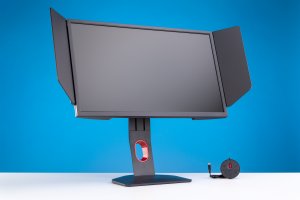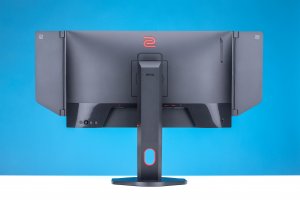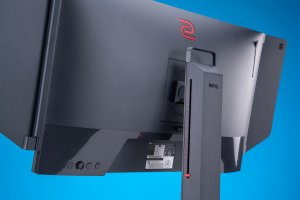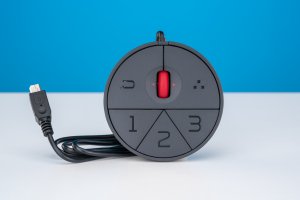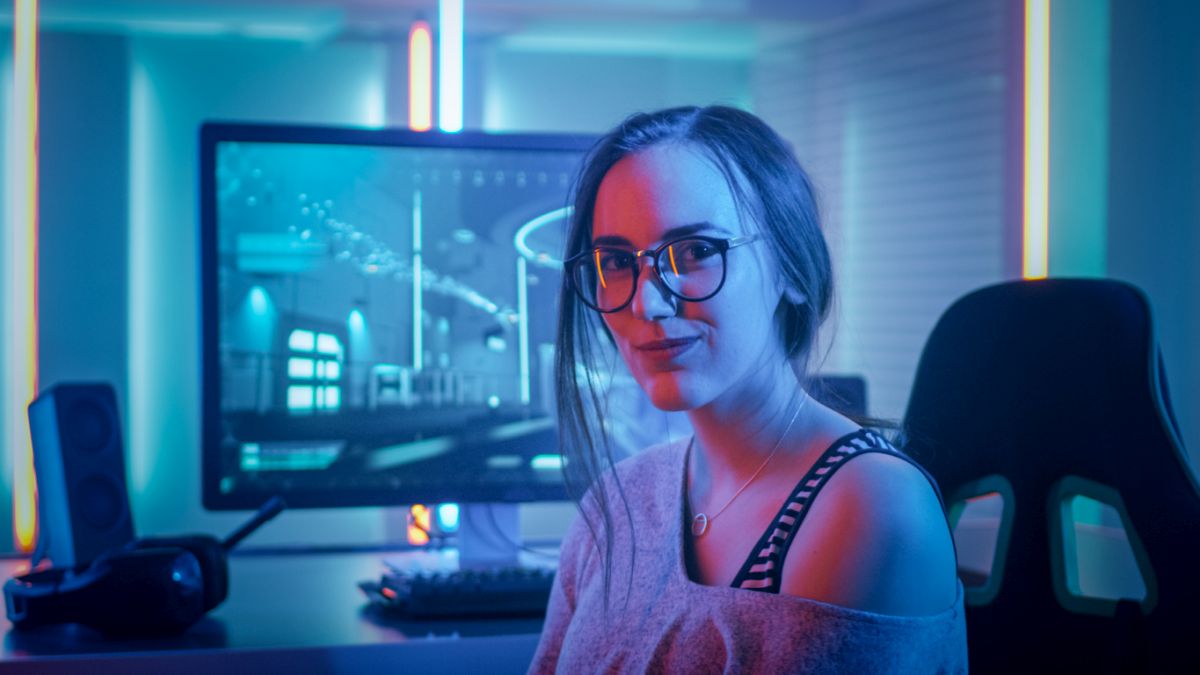
Competitive PC gaming happens fast, much faster than most monitors could keep up with. That’s why a vast number of gaming monitors come with almost as long a list of technological features designed specifically to maximize performance for high intensity gaming.
We’re here to help you understand all the advanced technologies that help your monitor take full advantage of your GPU, so you can shop and game with confidence.
To do so, let’s begin with a quick review of the fundamentals.
What’s in a screen?
A modern LCD display is essentially a grid of pixels illuminated by a backlight. A monitor receives image information from a PC’s graphics card that tells the monitor how to color each pixel. When viewed together, the collections of these millions of pixels appear to our eyes as one image.
Gaming Monitor Terms to Know
Resolution
This is a measure of the set amount of pixels the screen uses to generate a picture. It’s measure is represented the same way we define the dimensions of a rectangle, Width : Height. A FHD 1080p screen has a resolution of 1920 x 1080, meaning the display is 1920 pixels wide by 1080 pixels tall. The more pixels the sharper and more detailed an image can be.
Frame Rate
Monitors create the illusion of movement by flashing dozens of still images one after the other within a second. Each individual still image is called a “frame.” “Frame rate” is how many frames per second, or FPS, your GPU is sending to your monitor. The more frames per second, the smoother your gameplay can look.
Refresh Rate
“Refresh rate” is measured in Hz and refers to your monitor’s ability to show multiple frames per second. A classic 60 Hz monitor refreshes its image 60 times per second. That’s fine for movies or casual gaming, but high-end GPUs in competitive gaming scenarios produce far more than 60 FPS. If your monitor isn’t capable of refreshing as frequently as your GPU cranks out frames, you’ll experience image problems like tearing. That’s why modern gaming monitors have refresh rates as high as 360 Hz.
Response Time
This is a measure of how quickly a monitor’s pixels can activate and deactivate. It is measured in milliseconds, and the fewer, the better. A fast response time means pixels respond to their image commands more readily, creating crisper sharper movement and preventing negative image effects like “ghosting.”
Viewing Angle
This measures how obliquely you can view a screen and still enjoy true color and a distortion-free image. A wider angle is generally more desirable, as it gives you more flexibility in your position relative to your screen.
Panel Types
Similar to televisions, different monitors use slightly different means to generate their picture, and some methods work better for some purposes. They’re differentiated by the orientation of the LCD molecules and how they react when voltage is applied and there are basically three options:
VA (Vertical Alignment)
Good all-around monitors. Not the cheapest, not the most expensive. They produce good color, have a great contrast ratio (representation of a screens brightest bright relative to its darkest dark), and offer a decently wide viewing angle. But they have a very slow response time and limited refresh rates meaning they are not ideal for top-tier gaming.
IPS (In-Plane Switching)
The newest and most expensive option, IPS was designed for excellent color and maximum viewing angles. These monitors weren’t originally designed for speed, but you can get one with a decent response time if you’re willing to pay more.
TN (Twisted Nematic)
Oldest, cheapest, and most common TN monitors don’t provide the best image or color even within their limited viewing angle, but they excel where it counts most. They are FAST.
Now that we’ve established the basics, let’s get into the technologies that set some GPUs and gaming monitors apart from the rest when it comes to PC gaming.
Adaptive Sync
Also known as “Variable Refresh Rate,” adaptive sync basically convinces your monitor to refresh at the same rate that your GPU is generating frames. See, playing games isn’t like watching a movie. FPS is constant with a movie, so matching it up to a screen’s refresh rate is easy.
With a video game, your FPS can vary wildly depending on what is happening within the game.
If your monitor is refreshing before the next frame is ready, it can create a nasty phenomenon known as “tearing” where the monitor tries to display the top of one frame and the bottom of the next frame at once.
If your GPU is sending frames faster than your monitor can refresh you’ll notice shuddering and judder as you drop more frames than a clumsy LensCrafters clerk.
The two big technologies here are AMD’s FreeSync and Nvidia’s G-Sync. They are similar but very proprietary and each has its own strengths and weaknesses.
AMD FreeSync
AMD’s FreeSync is available on a wider variety of monitors at a lower price. There are tradeoffs to be made with that low cost. FreeSync is only effective within a set FPS range that varies from monitor to monitor and can be quite narrow.
Some additional features are available only on select FreeSync monitors, but as FreeSync can work over DisplayPort or HDMI, it is again a little more accessible.
Grab your AMD components
Nvidia G-Sync
Nvidia’s G-Sync is more exclusive and expensive than its competitor, and it’s only accessible via DisplayPort, but with those complications come a slew of significant advantages.
Every G-Sync monitor comes with extra features to improve your experience, and each monitor must pass a strict certification process to ensure it meets Nvidia’s expectations.
BenQ’s DyAc+ (Dynamic Accuracy)
Check out the BenQ XL2546K eSports 24.5-inch 240Hz gaming monitor with the latest DyAc+ technology
- BenQ ZOWIE XL2546K 240 HZ Gaming Monitor for Esports
- A smaller base saves desktop space
- Flexible height and tilt adjustments
- Cycle thru presets and graphics preferences settings with the handy S-Switch
DyAc is a proprietary new feature in BenQ gaming monitors that reduces motion blur by addressing one of the inherent weaknesses of LCD technology, namely its inability to shut pixels off quickly.
When pixels light up and darken to create the sense of motion, that illusion can be spoiled by the fact that LCD pixels can’t close and block out light to return to black fast enough. This causes hazy edges and blur in fast-paced settings or when coping with movement like weapon recoil.
Dynamic Accuracy mitigates this shortcoming by replicating a bit of technology from days gone by. CRT screens are inferior to their LCD counterparts in almost every category and metric, except one.
Cathode Ray Tube displays excel at returning pixels to dark. Because of how CRT screens beam the light they use to render images onto the screen, there is no after glow or residual light coming from a pixel once the beam has moved away. So there’s less motion blur.
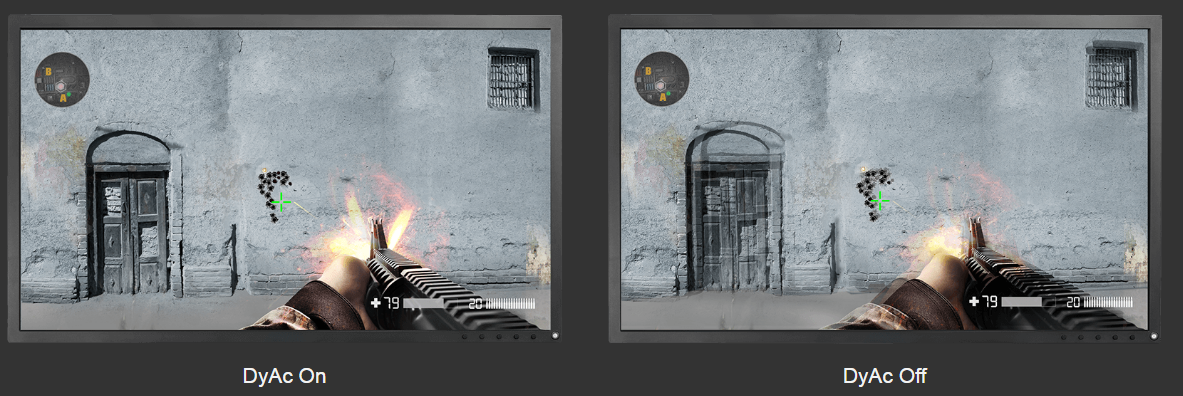 Dynamic Accuracy mimics this response time by completely turning the backlight off when a pixel is meant to go dark. This way it doesn’t matter how slowly an LCD pixel closes, because there’s no light to bleed through.
Dynamic Accuracy mimics this response time by completely turning the backlight off when a pixel is meant to go dark. This way it doesn’t matter how slowly an LCD pixel closes, because there’s no light to bleed through.
This is especially useful in keeping your crosshairs where you want them while dealing with recoil.
The technology is exclusive to BenQ ZOWIE monitors and currently doesn’t work with G-Sync or FreeSync. But these technologies tackle totally different issues.
Adaptive Sync is designed to fix problems caused by the divide between refresh rate and FPS. Things like tearing and stuttering.
Dynamic Accuracy keeps moving images sharp by mitigating an LCD’s inability to darken pixels quickly. So it’s perfect for those instances where you need optimal precision while staying mobile or firing in quick succession (aka like 75% of gaming).
Shop for your own BenQ gaming monitor.
What is Nvidia Reflex?
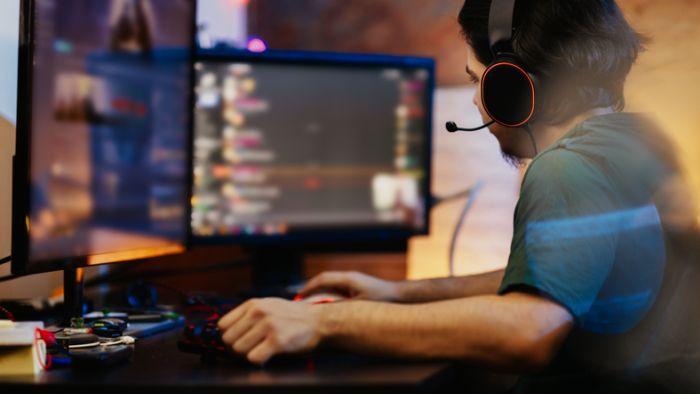
The Reflex is in charge of reducing your system latency
This handy little bit of software solves yet another screen struggle called “Latency.” Latency, otherwise known as “input lag,” is the time you have to wait between physically clicking your mouse and that click taking effect on screen.
Get your Nvidia gear
That’s usually only a matter of milliseconds but in competitive gaming, the battle can be won or lost in milliseconds.
Input lag is made up of more than a half dozen smaller bits of latency in different flavors. Latency from the mouse itself (peripheral latency), latency from the screen (display latency), and latency from the GPU (render latency).
Nvidia Reflex is a software solution that helps reduce input lag by eliminating one of the many middle-men that cause it, specifically the “render queue.”
This enhanced CPU – GPU communication prevents frames from getting stuck in traffic on their way to your screen, and reduces latency in general, keeping you more aware and responsive when the chips are down.
Best of all Nvidia Reflex requires practically zero processing power and it works with any monitor and any mouse.
The game you’re playing must be compatible with Nvidia Reflex (here’s a list) and if you want to use the “Nvidia Reflex Latency Analyzer” tool to see just how much latency time you’re saving, you’ll need a compatible monitor – mouse combo.
Check out our full selection of Gaming Mice
To learn more about this super software solution take a gander at this infotastic video:
Other ways to reduce your latency
Higher refresh rates help, as does going to a lower resolution monitor. This may mean that your monitor can’t be as large or finely detailed, but smaller resolution means each frame is a lighter lift for your GPU, so there’s less wait for you.
A mouse with a high polling rate can help if you’re running a top of the line PC but if your equipment isn’t as powerful as it could be that polling rate might actually add to your latency by putting extra strain on your system.
A top of the line gaming keyboard won’t often make much of a difference but it can still help, especially if you’re unable to take advantage of Nvidia Reflex.
Conclusion
Buying a new gaming monitor can be daunting but it can also be some of the wisest money a competitive gamer can spend. If you know which features matter most, there are good deals to be found. You just gotta watch for the right screen.

